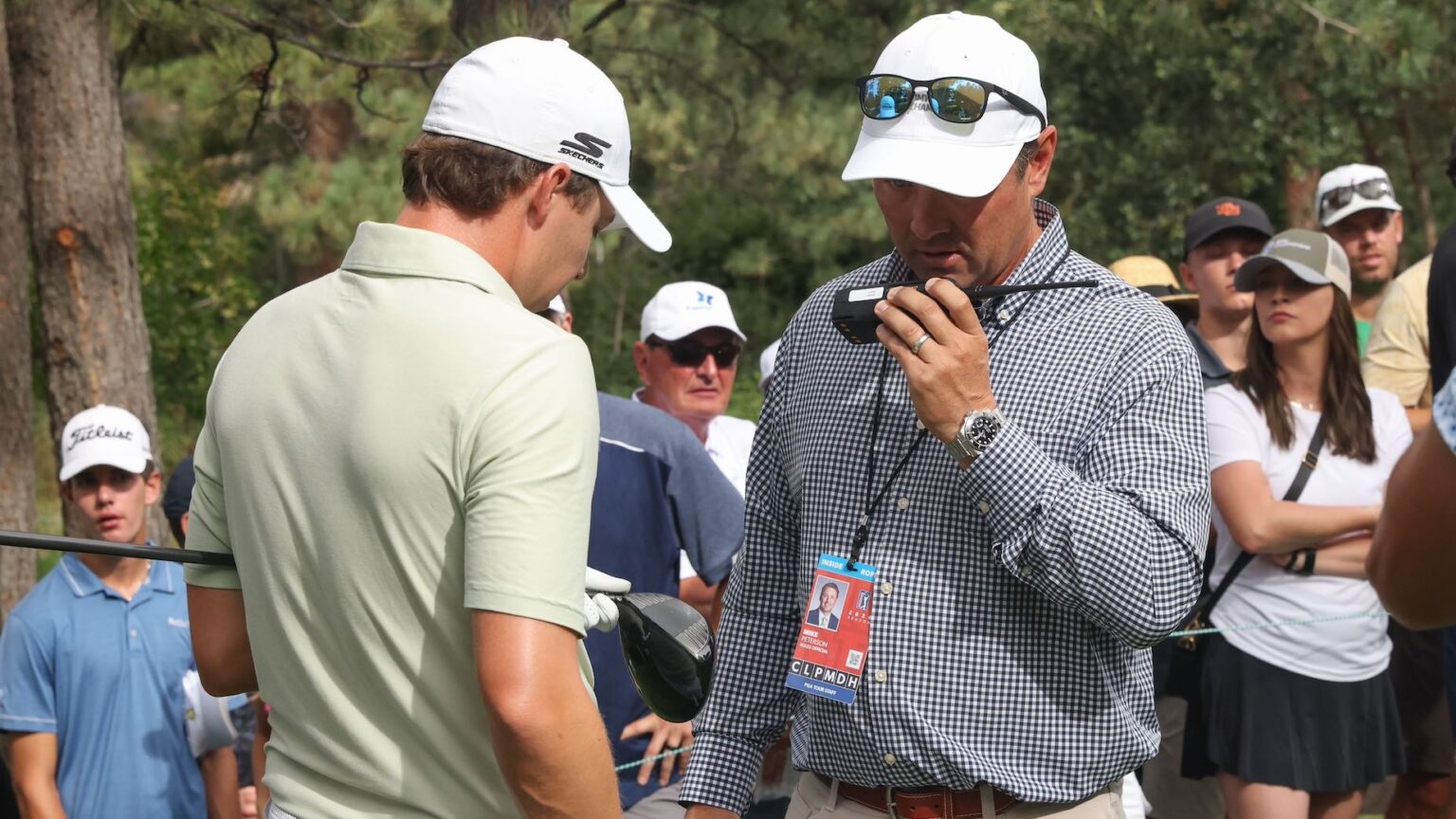Golf Club Controversy: Analyzing a Crack on Fitzpatrick’s Driver Face
A crack on the face of Matt Fitzpatrick’s Titleist TSi driver led to a debate with a PGA Tour rules official during a tournament. Fitzpatrick believed the crack was significant enough to negatively affect the club’s performance, but the rules official disagreed, citing the USGA’s Rule of Golf that stated a club isn’t replaceable due to a crack unless it caves in completely. Despite having backup driver heads in his locker, Fitzpatrick was not allowed to swap out the club due to the existing rule.
The decision to not allow Fitzpatrick to replace his damaged driver caused outrage among fans on social media, with many questioning why he was forced to play with a faulty club for the remainder of the round. Several former caddies and tour pros weighed in on the situation, highlighting the reasoning behind the rule that governs the thinness of driver faces to control distance. They explained that allowing pros to replace drivers with any type of crack would lead to manufacturers building thinner faces to maximize ball speed, thus impacting the integrity of the game.
The current rules in place regarding the spring-like effect of a driver’s face are aimed at adding restrictor plates to prevent excessive ball speed and maintain a level playing field. Equipment manufacturers already push the limits of speed in driver faces, leaving little room for changes in thickness. The risk of cracks in driver faces only increases over time, especially with older models, like Fitzpatrick’s TSi driver, posing a challenge for golfers who rely on their equipment for performance.
There is a need for clarity on what constitutes “significant damage” in a club, as the definition currently only includes a crack that causes the face to cave in completely. Experts suggest measuring the bulge and roll of a driver face during play to determine if it is negatively affecting performance, as visible cracks are a clear indication of potential issues. Comparing the situation to other sports, such as baseball, where a cracked bat would be immediately replaced, reinforces the concept that a damaged club should be allowed for substitution.
The controversy surrounding Fitzpatrick’s driver highlights the need for a review of existing rules and regulations governing equipment in golf. With advancements in technology and the increasing speed of driver faces, players face the challenge of maintaining integrity and fairness on the course. Clarifying the rules around damaged clubs and introducing practical solutions, such as measuring performance impact during play, could help ensure a level playing field for all golfers.
For those looking to upgrade their equipment, finding a fitting location like True Spec Golf can help assess and optimize your bag for peak performance. By understanding the nuances of equipment rules and regulations, players can make informed decisions about their gear and enhance their overall golfing experience. The controversy surrounding Fitzpatrick’s driver serves as a reminder of the importance of fair play and maintaining the integrity of the game through clear and transparent equipment guidelines.
